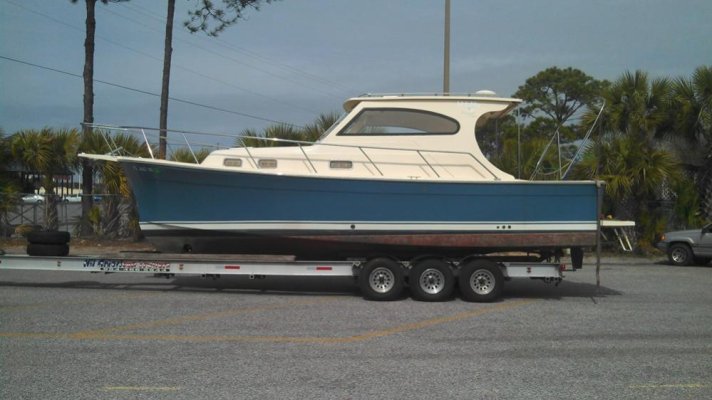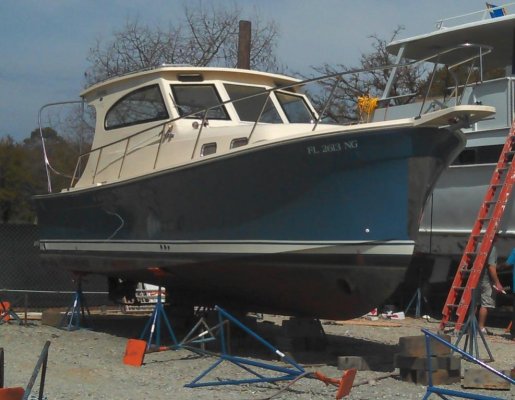MrJim
Senior Member
- Joined
- Jan 23, 2015
- Messages
- 206
- Location
- USA
- Vessel Name
- Irish Miss
- Vessel Make
- Mainship 30 Pilot Rum Runner Classic
I introduced myself a couple months ago, but now I can introduce my new (to me) boat. 2006 Mainship Rum Runner Classic II Pilot. 
The boat arrived at the local boat yard this morning after a long tortuous trip from Fort Myers (I've had easier times and less stress buying a house).
I guess the boat isn't a "true" trawler -- that's why I said "semi" in the title of this thread. But the way I see it, this is a good stepping stone from my previous life of owning fast planing boats to my eventual retired life in a full-blown, full-sized trawler.
The boat is sitting on blocks now, waiting for new bottom paint and zincs, and I hope to polish up the hull sides before she gets dropped in the water. I've learned a lot on this forum so far and I'm looking forward to learning (and contributing) more in the future.

The boat arrived at the local boat yard this morning after a long tortuous trip from Fort Myers (I've had easier times and less stress buying a house).
I guess the boat isn't a "true" trawler -- that's why I said "semi" in the title of this thread. But the way I see it, this is a good stepping stone from my previous life of owning fast planing boats to my eventual retired life in a full-blown, full-sized trawler.
The boat is sitting on blocks now, waiting for new bottom paint and zincs, and I hope to polish up the hull sides before she gets dropped in the water. I've learned a lot on this forum so far and I'm looking forward to learning (and contributing) more in the future.







